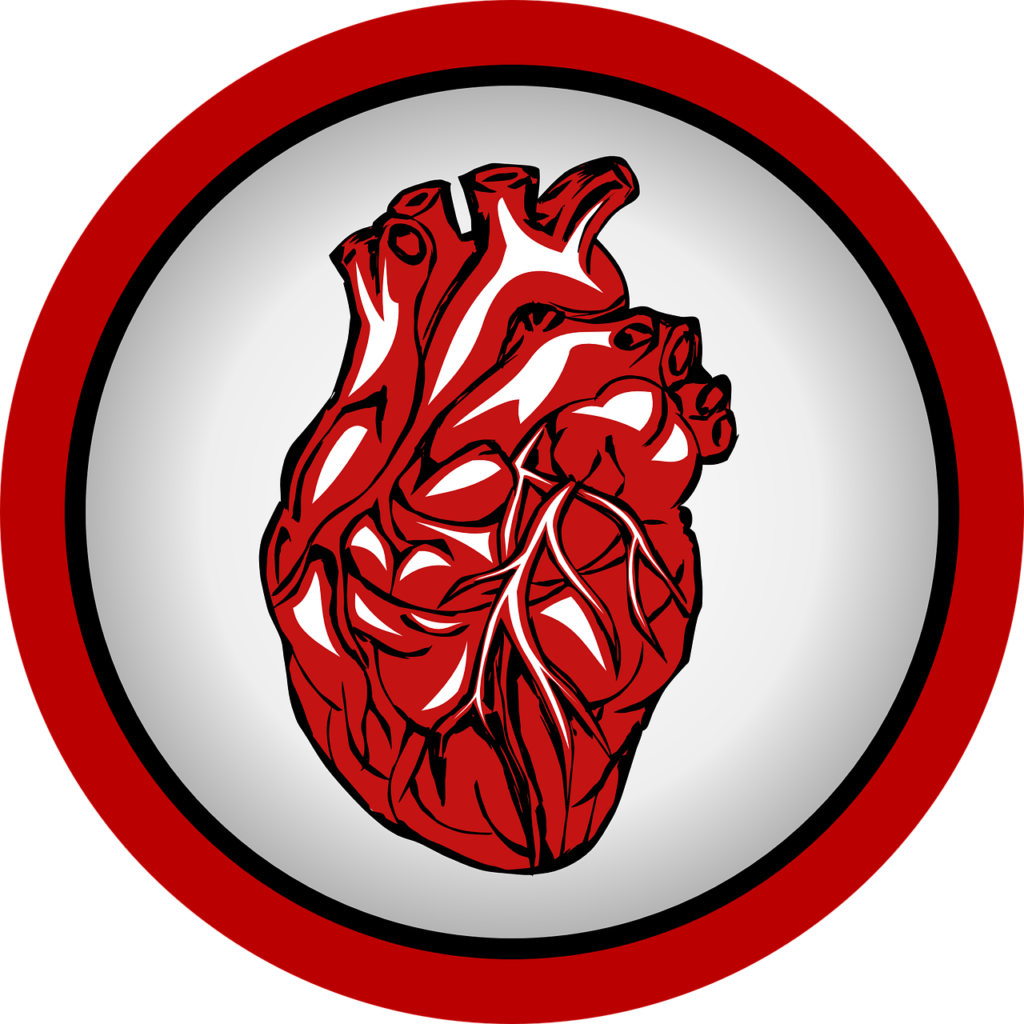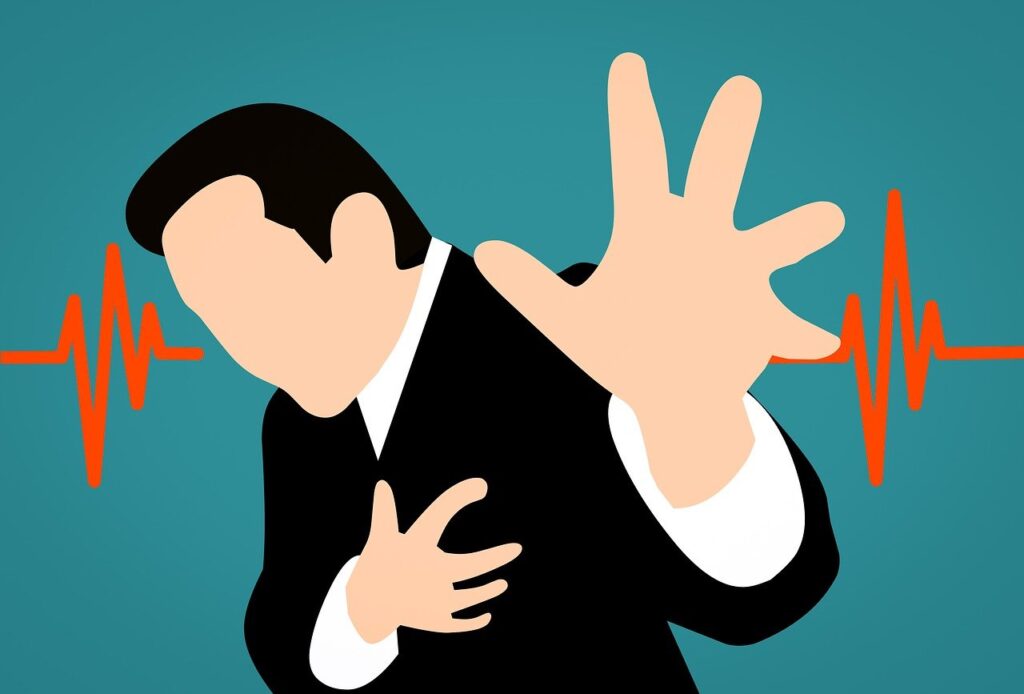What is chest pain after stent placement? If you’ve had a stent placed in your coronary arteries, it’s not uncommon to experience some chest discomfort or pain in the months and even years following the procedure. While chest pain can be concerning, it’s essential to understand the possible causes and how to manage it. In this comprehensive guide, I will delve into the reasons for chest pain after stent placement and offer guidance on what to do.
What is the Procedure for Stent Placement in the Heart
Stent placement in the heart is a medical procedure used to treat narrowed or blocked coronary arteries, which are blood vessels that supply oxygen and nutrients to the heart muscle. This condition is often referred to as coronary artery disease (CAD) or atherosclerosis.
During a stent placement procedure, also known as percutaneous coronary intervention (PCI) or angioplasty, a cardiologist uses a thin, flexible tube called a catheter. Here’s how the procedure typically works:
- Preparation: The patient is usually awake during the procedure, and local anesthesia is used to numb the area where the catheter is inserted. This is typically in the groin, wrist, or sometimes the arm.
- Catheter insertion: The cardiologist inserts a catheter into the artery through a small incision. This catheter is carefully guided through the arteries until it reaches the coronary arteries near the heart.
- Angiography: A contrast dye is injected through the catheter, and X-ray imaging is used to visualize the coronary arteries and pinpoint the location of the blockages or narrowing.
- Balloon angioplasty: Once the blockage is located, a small balloon at the tip of the catheter is inflated at the site of the blockage. The inflation of the balloon compresses the plaque (cholesterol and fatty deposits) against the artery walls, widening the artery and restoring blood flow.
- Stent placement: In many cases, a metal mesh tube called a stent is inserted at the same time as the angioplasty. The stent is collapsed around the deflated balloon and then expanded when the balloon is inflated. This helps to hold the artery open and prevent it from narrowing again. Stents can be made of various materials, including stainless steel and drug-eluting stents, which release medication over time to reduce the risk of re-narrowing.
- Final assessment: After stent placement, the cardiologist evaluates blood flow through the coronary artery to ensure that it is adequately restored. The catheter is then removed, and the incision site is typically closed with sutures or a closure device.
Possible Causes of Chest Pain After Stent Placement

- Restenosis: One common cause of chest pain after stent placement is the recurrence of a narrowed or blocked artery, a condition called restenosis. This occurs when the artery narrows again due to the buildup of plaque or scar tissue at the stent site.
- Incomplete Revascularization: In some cases, not all the affected arteries are treated during the initial stent placement, leaving room for further issues.
- Stent Thrombosis: Stent thrombosis is a rare but severe complication in which a blood clot forms inside the stent, obstructing blood flow to the heart muscle. This can lead to chest pain and even a heart attack.
- Coronary Artery Disease Progression: Even with a stent in place, the underlying coronary artery disease can progress, leading to new blockages and chest pain.
- Medication Adjustment: Changes in medication or missed doses can affect the stability of the stent and may lead to chest discomfort.
- Non-Cardiac Causes: Chest pain may not always be cardiac-related. Gastrointestinal issues, muscular problems, or anxiety can also cause chest discomfort.
Managing Chest Pain One Year After Stent Placement
- Consult Your Cardiologist: If you experience chest pain or discomfort, the first step is to contact your cardiologist. They can evaluate your symptoms, perform diagnostic tests, and determine the cause of the pain.
- Medication Adjustment: Your cardiologist may recommend adjustments to your medication regimen to ensure your stent remains stable and to address any underlying heart issues.
- Additional Procedures: In cases of restenosis or stent thrombosis, additional interventional procedures, such as angioplasty and stent placement, may be required.
- Lifestyle Modifications: Maintaining a heart-healthy lifestyle is crucial. This includes a balanced diet, regular exercise, smoking cessation, and stress management.
- Anxiety Management: If anxiety or stress contributes to your chest pain, consider stress-reduction techniques or therapy to address the emotional component.
- Regular Follow-Up: Regularly follow up with your cardiologist as recommended to monitor your heart health and detect any issues early.
What to Avoid After Stent Placement
After undergoing a stent placement procedure in your coronary arteries, it’s important to make certain lifestyle and dietary changes to promote the long-term success of the procedure and reduce the risk of further heart-related issues. Here are some things to avoid or be cautious about:
- Smoking: Smoking is a major risk factor for heart disease and can increase the likelihood of stent restenosis (re-narrowing of the arteries). Avoid smoking and exposure to secondhand smoke.
- Unhealthy diet: Limit your intake of saturated and trans fats, cholesterol, and sodium, which can contribute to plaque buildup in your arteries. Instead, focus on a heart-healthy diet rich in fruits, vegetables, whole grains, lean proteins, and low-fat dairy products.
- Excess salt: High sodium intake can lead to high blood pressure, which is a risk factor for heart disease. Be cautious about processed foods, restaurant meals, and excessive salt use in cooking.
- Alcohol: Limit alcohol consumption to moderate levels. Excessive alcohol can raise blood pressure and contribute to other heart-related issues.
- High-cholesterol foods: Avoid or minimize consumption of foods high in saturated and trans fats, which can raise your cholesterol levels. These include fried foods, fatty cuts of meat, full-fat dairy products, and many baked goods.
- Processed and fast foods: These often contain unhealthy fats, excessive salt, and additives. Opt for homemade meals prepared with fresh, whole ingredients.
- Lack of exercise: Regular physical activity is essential for maintaining heart health. Consult your healthcare provider to determine an appropriate exercise plan based on your individual needs and capabilities.
- Stress: Chronic stress can negatively affect your heart health. Learn stress management techniques, such as deep breathing, meditation, yoga, or counseling.
- Skipping medications: Follow your prescribed medication regimen, which may include antiplatelet drugs, statins, and other heart medications. Consult your healthcare provider before making any changes to your medication.
- Inadequate follow-up care: Attend all scheduled follow-up appointments with your healthcare provider to monitor your progress and ensure the stent is functioning well.
- Skipping cardiac rehabilitation: Cardiac rehabilitation programs can help you with exercise, diet, and lifestyle changes to improve your heart health. Don’t skip these programs if they are recommended for you.
- Ignoring symptoms: Pay attention to any new or worsening symptoms, such as chest pain, shortness of breath, fatigue, or irregular heartbeats, and report them to your healthcare provider promptly.
- Overexertion: While regular exercise is important, avoid overexertion or extreme physical activities. Consult with your healthcare provider about a suitable exercise plan.
- Non-prescription medications and supplements: Check with your healthcare provider before taking any over-the-counter medications or dietary supplements, as some can interact with your prescribed medications.
What to Expect After Stent Placement
After undergoing stent placement surgery in your coronary arteries, you can expect a recovery process that involves both physical and lifestyle adjustments. Here are some things to expect after stent surgery:
- Hospital stay: You will typically spend a day or two in the hospital for observation and monitoring after the procedure. In some cases, you may be able to go home on the same day.
- Recovery time: The recovery period varies from person to person but is generally relatively short. You can usually resume your normal activities within a few days to a week.
- Medications: Your healthcare provider will prescribe medications, which may include antiplatelet drugs (such as aspirin and clopidogrel) to prevent blood clots and reduce the risk of stent thrombosis, statins to manage cholesterol, and other medications to manage heart-related conditions.
- Cardiac rehabilitation: Your healthcare provider may recommend participating in a cardiac rehabilitation program. These programs provide supervised exercise, education on heart-healthy living, and emotional support to help you recover and prevent further heart-related issues.
- Lifestyle changes: You’ll be advised to make significant lifestyle changes to reduce the risk of future heart problems. This may include adopting a heart-healthy diet, quitting smoking, managing stress, and incorporating regular exercise into your routine.
- Follow-up appointments: You will have follow-up appointments with your cardiologist to monitor your progress and assess the effectiveness of the stent placement. These appointments are essential for ongoing care.
- Dietary restrictions: You may need to follow a heart-healthy diet, which means limiting saturated and trans fats, cholesterol, and sodium while increasing your intake of fruits, vegetables, whole grains, and lean proteins.
- Weight management: If you are overweight, losing excess weight can reduce the strain on your heart and improve overall health.
- Blood pressure management: You may need to monitor and manage your blood pressure through lifestyle changes and medication if necessary.
- Exercise: Regular physical activity is crucial for heart health. Your healthcare provider will provide guidelines on exercise tailored to your specific condition and fitness level.
- Avoiding certain activities: You may be advised to avoid heavy lifting or strenuous activities for a certain period of time after the procedure.
- Monitoring for symptoms: Pay attention to any new or worsening symptoms, such as chest pain, shortness of breath, or irregular heartbeats. Report any concerning symptoms to your healthcare provider promptly.
- Medication management: Take your prescribed medications as directed by your healthcare provider and report any side effects or concerns.
Angioplasty vs Stent: What is the Difference
Angioplasty: Angioplasty, also known as balloon angioplasty, is a medical procedure used to treat narrowed or blocked blood vessels, most commonly in the coronary arteries. It involves the use of a catheter with a deflated balloon at its tip to open narrowed arteries by inflating the balloon at the site of the blockage. Angioplasty improves blood flow by compressing the plaque against the artery walls and widening the artery.
Stent Placement: Stent placement is a procedure performed in conjunction with angioplasty to help maintain the improved blood flow achieved during angioplasty. A stent is a small, mesh-like tube made of metal or other materials that is implanted in the artery. The stent collapses around the deflated balloon and expands when the balloon is inflated. It serves as a scaffolding to keep the artery open, reducing the risk of restenosis (re-narrowing of the artery) after the procedure.
Here’s a tabulated comparison of angioplasty and stent placement:
| Aspect | Angioplasty | Stent Placement |
|---|---|---|
| Purpose | To temporarily widen narrowed or blocked arteries | To provide a long-term solution for keeping the artery open and preventing restenosis. |
| Procedure Steps | 1. A catheter with a stent is inserted into the artery. 2. The balloon is inflated to expand the stent, pushing it against the artery walls. 3. The balloon is deflated and removed. | DES releases medication over time to reduce restenosis. |
| Use of Device | 1. A catheter with a balloon is inserted into the artery. 2. The balloon is inflated to widen the artery. 3. The balloon is deflated and removed. | Stent (metal or drug-eluting) is used. |
| Long-Term Effects | The balloon catheter is used. | Long-term improvement in blood flow; reduced risk of restenosis. |
| Types of Stents | N/A (stents are not used in angioplasty alone). | Bare-metal stents and drug-eluting stents (DES). |
| Medication | N/A (no medication released from a balloon). | DES release medication over time to reduce restenosis. |
| Performed Alone | Yes, angioplasty can be performed on its own. | No, stent placement is usually performed in combination with angioplasty. |
Summary
Chest pain following stent placement is not uncommon, but it should not be ignored. If you experience chest discomfort, contact your healthcare provider promptly. In many cases, prompt evaluation and appropriate management can address the issue and help ensure your stent continues to support your heart health.
Remember that your cardiologist is your best resource for understanding and managing any chest pain or discomfort you may experience after stent placement. Don’t hesitate to seek their guidance and expertise to maintain a healthy heart.


